Classes Of Fire on:
[Wikipedia]
[Google]
[Amazon]
A fire class is a system of categorizing fire with regard to the type of material and
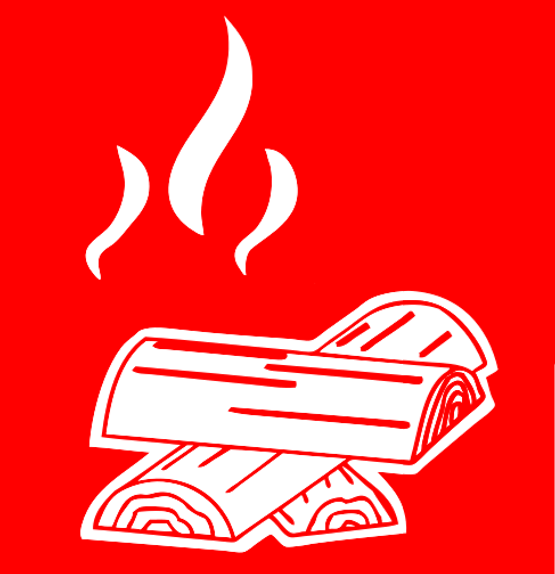 Class A fires consist of ordinary combustibles such as wood, paper, fabric, and most kinds of trash. They may be extinguished by water, wet chemical suppression, or dry chemical powder.
Class A fires consist of ordinary combustibles such as wood, paper, fabric, and most kinds of trash. They may be extinguished by water, wet chemical suppression, or dry chemical powder.

 Class B fires are those where the fuel is flammable or combustible liquid. The US system includes flammable gases in their "Class B". In the European/Australian system, flammable liquids are designated "Class B" having flash point less than . These fires follow the same basic fire tetrahedron (heat, fuel, oxygen, chemical reaction) as ordinary combustible fires, except that the fuel in question is a flammable liquid such as gasoline, or gas such as natural gas. A solid stream of water should never be used to extinguish this type because it can cause the fuel to scatter, spreading the flames. The most effective way to extinguish a liquid fire is by inhibiting the chemical chain reaction of the fire, which is done by dry chemical and Halon extinguishing agents, although smothering with CO2 or, for liquids, foam is also effective. Halon has fallen out of favor in recent times (except for aircraft fire extinguishing systems) because it is an ozone-depleting material; the Montreal Protocol declares that Halon should no longer be used. Chemicals such as
Class B fires are those where the fuel is flammable or combustible liquid. The US system includes flammable gases in their "Class B". In the European/Australian system, flammable liquids are designated "Class B" having flash point less than . These fires follow the same basic fire tetrahedron (heat, fuel, oxygen, chemical reaction) as ordinary combustible fires, except that the fuel in question is a flammable liquid such as gasoline, or gas such as natural gas. A solid stream of water should never be used to extinguish this type because it can cause the fuel to scatter, spreading the flames. The most effective way to extinguish a liquid fire is by inhibiting the chemical chain reaction of the fire, which is done by dry chemical and Halon extinguishing agents, although smothering with CO2 or, for liquids, foam is also effective. Halon has fallen out of favor in recent times (except for aircraft fire extinguishing systems) because it is an ozone-depleting material; the Montreal Protocol declares that Halon should no longer be used. Chemicals such as
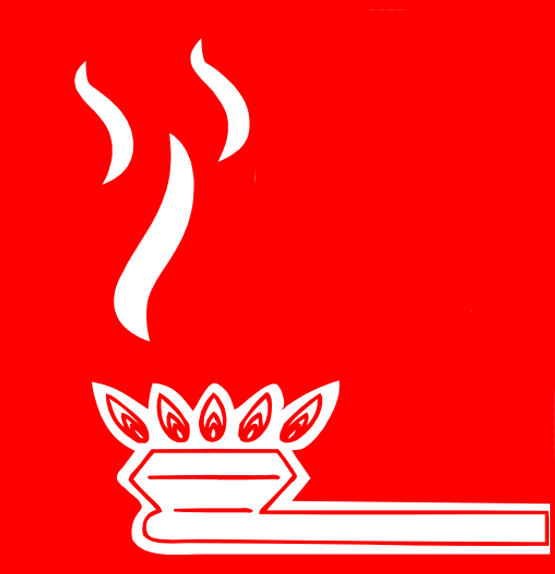 Fires where the fuel is flammable or combustible gas are classified as "Class C" in the European/Australian system, and "Class B" along with flammable liquids in the US system. Due to the gaseous nature of the fuel, these fires are difficult to extinguish. The most effective techniques for the control of a flammable gas fire are to stop the flow of fuel (by turning off any gas taps or valves) or to displace the oxygen. Control of fires involving flammable gases where the gas source cannot be controlled must be carefully managed. If the flames are extinguished, but the gas continues to leak, an explosive atmosphere may be created, and the gas may find a source for reignition outside of the originally affected area. Strategies employed to manage these fires may include trying to direct or contain the fire to prevent the ignition of other fuels whilst work is done to control the fuel supply.
Fires where the fuel is flammable or combustible gas are classified as "Class C" in the European/Australian system, and "Class B" along with flammable liquids in the US system. Due to the gaseous nature of the fuel, these fires are difficult to extinguish. The most effective techniques for the control of a flammable gas fire are to stop the flow of fuel (by turning off any gas taps or valves) or to displace the oxygen. Control of fires involving flammable gases where the gas source cannot be controlled must be carefully managed. If the flames are extinguished, but the gas continues to leak, an explosive atmosphere may be created, and the gas may find a source for reignition outside of the originally affected area. Strategies employed to manage these fires may include trying to direct or contain the fire to prevent the ignition of other fuels whilst work is done to control the fuel supply.
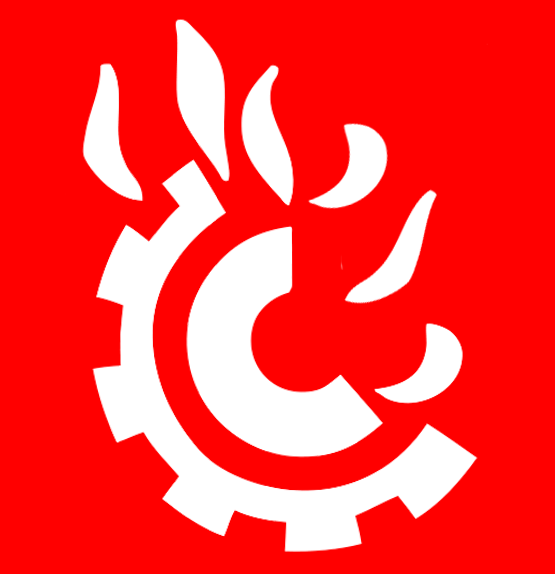 Class D fires involve combustible metals - especially
Class D fires involve combustible metals - especially
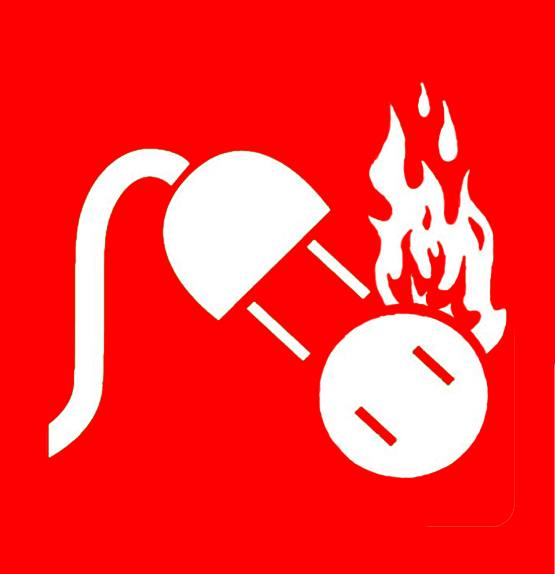
 Fires predominantly involving electricity have different classifications in each of the three systems. They are classified as a "Class E" fire under the Australian system, "Class C" under the American system, and are classified based on the ignited fuel type under the European system (which previously shared the "Class E" classification with the Australian system). Electrical fires are fires involving potentially energized electrical equipment. This sort of fire may be caused by short-circuiting machinery or overloaded electrical cables. These fires can be a severe hazard to firefighters using water or other conductive agents, as electricity may be conducted from the fire, through water, to the firefighter's body, and then earth.
Fires predominantly involving electricity have different classifications in each of the three systems. They are classified as a "Class E" fire under the Australian system, "Class C" under the American system, and are classified based on the ignited fuel type under the European system (which previously shared the "Class E" classification with the Australian system). Electrical fires are fires involving potentially energized electrical equipment. This sort of fire may be caused by short-circuiting machinery or overloaded electrical cables. These fires can be a severe hazard to firefighters using water or other conductive agents, as electricity may be conducted from the fire, through water, to the firefighter's body, and then earth.
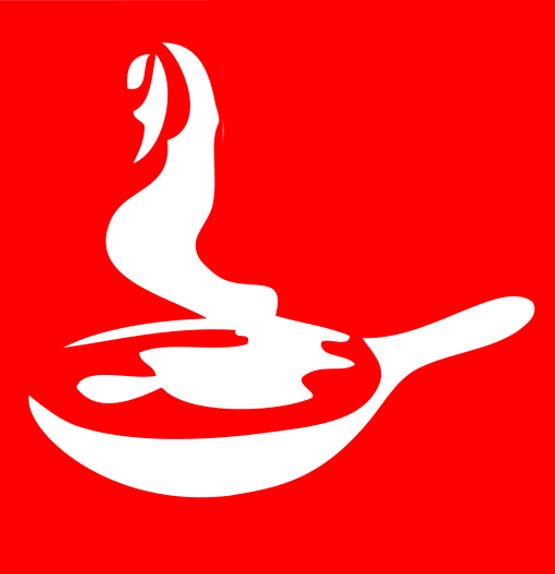
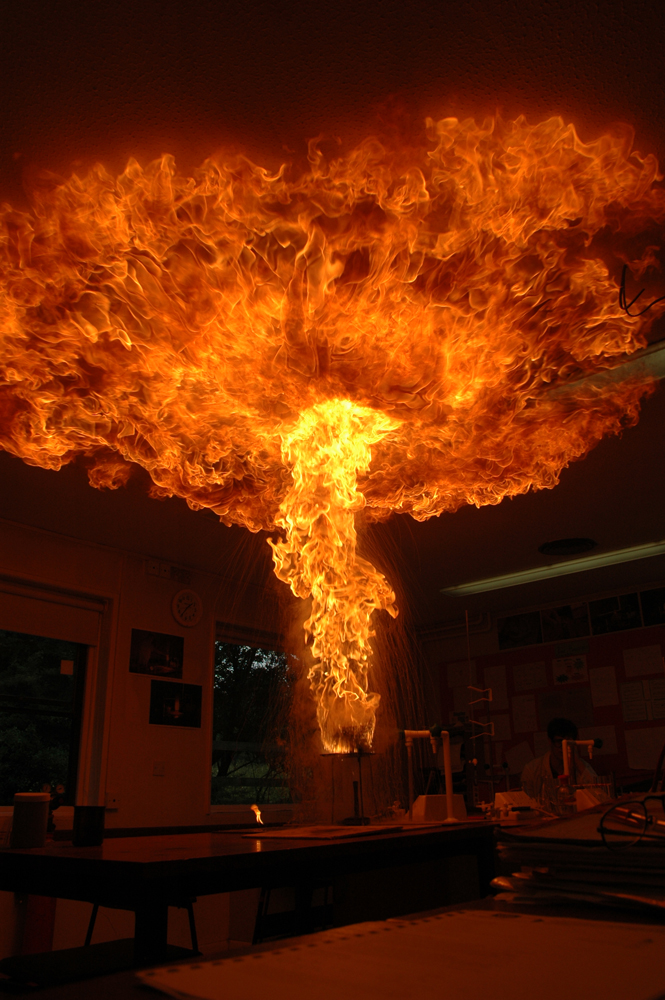 Fires involving cooking oils and fats are classified as "Class F" under the European and Australian systems, and "Class K" under the American system. Though such fires are technically a subclass of the flammable liquid/gas class, the special characteristics of these types of fires, namely the higher flash point, are considered important enough to recognize separately. Some special extinguishers designed for this use smother the fire by turning the oil into a foam. A water mist can also be used. As with Class B fires, a solid stream of water should never be used to extinguish this type because it can cause the fuel to scatter, spreading the flames. Appropriate fire extinguishers may also have hoods over them that help extinguish the fire. Sometimes fire blankets are used to stop a fire in a kitchen or on a stove.
Fires involving cooking oils and fats are classified as "Class F" under the European and Australian systems, and "Class K" under the American system. Though such fires are technically a subclass of the flammable liquid/gas class, the special characteristics of these types of fires, namely the higher flash point, are considered important enough to recognize separately. Some special extinguishers designed for this use smother the fire by turning the oil into a foam. A water mist can also be used. As with Class B fires, a solid stream of water should never be used to extinguish this type because it can cause the fuel to scatter, spreading the flames. Appropriate fire extinguishers may also have hoods over them that help extinguish the fire. Sometimes fire blankets are used to stop a fire in a kitchen or on a stove.
Classification of Portable Fire Extinguishers
Occupational Safety and Health Administration
Evacuation Plans and Procedures eTool
Occupational Safety and Health Administration
Information on Fire Extinguishers
The Fire Safety Advice Centre
Australian Fire Classes
Futura Fire - Australia
Wollongong Extinguisher Service-Australia {{DEFAULTSORT:Fire Classes Classification systems Firefighting
fuel
A fuel is any material that can be made to react with other substances so that it releases energy as thermal energy or to be used for work. The concept was originally applied solely to those materials capable of releasing chemical energy but ...
for combustion. Class letters are often assigned to the different types of fire, but these differ between territories. There are separate standards for the United States, Europe, and Australia
Australia, officially the Commonwealth of Australia, is a Sovereign state, sovereign country comprising the mainland of the Australia (continent), Australian continent, the island of Tasmania, and numerous List of islands of Australia, sma ...
. This is used to determine the type of extinguishing agent that can be used for that fire class.
Class A: Ordinary combustibles
 Class A fires consist of ordinary combustibles such as wood, paper, fabric, and most kinds of trash. They may be extinguished by water, wet chemical suppression, or dry chemical powder.
Class A fires consist of ordinary combustibles such as wood, paper, fabric, and most kinds of trash. They may be extinguished by water, wet chemical suppression, or dry chemical powder.
Class B: Flammable liquid

 Class B fires are those where the fuel is flammable or combustible liquid. The US system includes flammable gases in their "Class B". In the European/Australian system, flammable liquids are designated "Class B" having flash point less than . These fires follow the same basic fire tetrahedron (heat, fuel, oxygen, chemical reaction) as ordinary combustible fires, except that the fuel in question is a flammable liquid such as gasoline, or gas such as natural gas. A solid stream of water should never be used to extinguish this type because it can cause the fuel to scatter, spreading the flames. The most effective way to extinguish a liquid fire is by inhibiting the chemical chain reaction of the fire, which is done by dry chemical and Halon extinguishing agents, although smothering with CO2 or, for liquids, foam is also effective. Halon has fallen out of favor in recent times (except for aircraft fire extinguishing systems) because it is an ozone-depleting material; the Montreal Protocol declares that Halon should no longer be used. Chemicals such as
Class B fires are those where the fuel is flammable or combustible liquid. The US system includes flammable gases in their "Class B". In the European/Australian system, flammable liquids are designated "Class B" having flash point less than . These fires follow the same basic fire tetrahedron (heat, fuel, oxygen, chemical reaction) as ordinary combustible fires, except that the fuel in question is a flammable liquid such as gasoline, or gas such as natural gas. A solid stream of water should never be used to extinguish this type because it can cause the fuel to scatter, spreading the flames. The most effective way to extinguish a liquid fire is by inhibiting the chemical chain reaction of the fire, which is done by dry chemical and Halon extinguishing agents, although smothering with CO2 or, for liquids, foam is also effective. Halon has fallen out of favor in recent times (except for aircraft fire extinguishing systems) because it is an ozone-depleting material; the Montreal Protocol declares that Halon should no longer be used. Chemicals such as FM-200
1,1,1,2,3,3,3-Heptafluoropropane, also called heptafluoropropane, HFC-227ea (International Organization for Standardization, ISO name), HFC-227 or FM-200, as well as apaflurane (International Nonproprietary Name, INN), is a colourless, odourless ...
are now the recommended halogenated suppressant.
Class B (US)/Class C (EU/AU): Flammable gases
 Fires where the fuel is flammable or combustible gas are classified as "Class C" in the European/Australian system, and "Class B" along with flammable liquids in the US system. Due to the gaseous nature of the fuel, these fires are difficult to extinguish. The most effective techniques for the control of a flammable gas fire are to stop the flow of fuel (by turning off any gas taps or valves) or to displace the oxygen. Control of fires involving flammable gases where the gas source cannot be controlled must be carefully managed. If the flames are extinguished, but the gas continues to leak, an explosive atmosphere may be created, and the gas may find a source for reignition outside of the originally affected area. Strategies employed to manage these fires may include trying to direct or contain the fire to prevent the ignition of other fuels whilst work is done to control the fuel supply.
Fires where the fuel is flammable or combustible gas are classified as "Class C" in the European/Australian system, and "Class B" along with flammable liquids in the US system. Due to the gaseous nature of the fuel, these fires are difficult to extinguish. The most effective techniques for the control of a flammable gas fire are to stop the flow of fuel (by turning off any gas taps or valves) or to displace the oxygen. Control of fires involving flammable gases where the gas source cannot be controlled must be carefully managed. If the flames are extinguished, but the gas continues to leak, an explosive atmosphere may be created, and the gas may find a source for reignition outside of the originally affected area. Strategies employed to manage these fires may include trying to direct or contain the fire to prevent the ignition of other fuels whilst work is done to control the fuel supply.
Class D: Metal
 Class D fires involve combustible metals - especially
Class D fires involve combustible metals - especially alkali metal
The alkali metals consist of the chemical elements lithium (Li), sodium (Na), potassium (K),The symbols Na and K for sodium and potassium are derived from their Latin names, ''natrium'' and ''kalium''; these are still the origins of the names ...
s like lithium and potassium, alkaline earth metals such as magnesium, and group 4 element
Group 4 is the second group of transition metals in the periodic table. It contains the four elements titanium (Ti), zirconium (Zr), hafnium (Hf), and rutherfordium (Rf). The group is also called the titanium group or titanium family after its lig ...
s such as titanium and zirconium.
Metal fires represent a unique hazard because people are often not aware of the characteristics of these fires and are not properly prepared to fight them. Therefore, even a small metal fire can spread and become a larger fire in the surrounding ordinary combustible materials. Certain metals burn in contact with air or water (for example, sodium), which exacerbates this risk. Masses of combustible metals do not usually represent great fire risks because heat is conducted away from hot spots so efficiently that the heat of combustion cannot be maintained. In consequence, significant heat energy is required to ignite a contiguous mass of combustible metal. Generally, metal fires are a hazard when the metal is in the form of sawdust, machine shavings or other metal "fines", which combust more rapidly than larger blocks due to their increased surface area. Metal fires can be ignited by the same ignition sources that would start other common fires.
Care must be taken when extinguishing metal fires. Water and other common firefighting agents can excite metal fires and make them worse. The National Fire Protection Association
The National Fire Protection Association (NFPA) is an international nonprofit organization devoted to eliminating death, injury, property and economic loss due to fire, electrical and related hazards. As of 2018, the NFPA claims to have 50,000 mem ...
recommends that metal fires be fought with dry powder extinguishing agents that work by smothering and heat absorption. Different metals require different agents and for a particular metal, agents cannot necessarily be substituted for one another. The most common agents are sodium chloride
Sodium chloride , commonly known as salt (although sea salt also contains other chemical salts), is an ionic compound with the chemical formula NaCl, representing a 1:1 ratio of sodium and chloride ions. With molar masses of 22.99 and 35.45 g ...
granules and graphite powder. In recent years, powdered copper has also come into use. These ''dry powder'' extinguishers should not be confused with those that contain ''dry chemical'' agents. The two are not the same, and only dry powder should be used to extinguish a metal fire. Using a dry chemical extinguisher in error, in place of dry powder, can be ineffective or actually increase the intensity of a metal fire.
Class C (US)/Class E (AU)/Unclassified (EU): Electrical

 Fires predominantly involving electricity have different classifications in each of the three systems. They are classified as a "Class E" fire under the Australian system, "Class C" under the American system, and are classified based on the ignited fuel type under the European system (which previously shared the "Class E" classification with the Australian system). Electrical fires are fires involving potentially energized electrical equipment. This sort of fire may be caused by short-circuiting machinery or overloaded electrical cables. These fires can be a severe hazard to firefighters using water or other conductive agents, as electricity may be conducted from the fire, through water, to the firefighter's body, and then earth.
Fires predominantly involving electricity have different classifications in each of the three systems. They are classified as a "Class E" fire under the Australian system, "Class C" under the American system, and are classified based on the ignited fuel type under the European system (which previously shared the "Class E" classification with the Australian system). Electrical fires are fires involving potentially energized electrical equipment. This sort of fire may be caused by short-circuiting machinery or overloaded electrical cables. These fires can be a severe hazard to firefighters using water or other conductive agents, as electricity may be conducted from the fire, through water, to the firefighter's body, and then earth. Electrical shocks
Electrical injury is a physiological reaction caused by electric current passing through the body. The injury depends on the density of the current, tissue resistance and duration of contact. Very small currents may be imperceptible or produce a ...
have caused many firefighter deaths.
Electrical fire may be fought in the same way as an ordinary combustible fire, but water, foam, and other conductive agents are not to be used. While the fire is or possibly could be electrically energized, it can be fought with any extinguishing agent rated for electrical fire. Carbon dioxide CO2, NOVEC 1230, FM-200
1,1,1,2,3,3,3-Heptafluoropropane, also called heptafluoropropane, HFC-227ea (International Organization for Standardization, ISO name), HFC-227 or FM-200, as well as apaflurane (International Nonproprietary Name, INN), is a colourless, odourless ...
and dry chemical powder extinguishers and even baking soda are especially suited to extinguishing this sort of fire. PKP PKP may stand for:
Organizations
* Partido Komunista ng Pilipinas-1930, original Filipino communist party
* Partido Komunista ng Pilipinas, underground Filipino Maoist party
* Phi Kappa Phi, oldest all-discipline honor society in the United Stat ...
should be a last resort solution to extinguishing the fire due to its corrosive tendencies. Once electricity is shut off to the equipment involved, it will generally become an ordinary combustible fire.
Class F (EU/AU)/Class K (US): Cooking oils and fats (kitchen fires)

 Fires involving cooking oils and fats are classified as "Class F" under the European and Australian systems, and "Class K" under the American system. Though such fires are technically a subclass of the flammable liquid/gas class, the special characteristics of these types of fires, namely the higher flash point, are considered important enough to recognize separately. Some special extinguishers designed for this use smother the fire by turning the oil into a foam. A water mist can also be used. As with Class B fires, a solid stream of water should never be used to extinguish this type because it can cause the fuel to scatter, spreading the flames. Appropriate fire extinguishers may also have hoods over them that help extinguish the fire. Sometimes fire blankets are used to stop a fire in a kitchen or on a stove.
Fires involving cooking oils and fats are classified as "Class F" under the European and Australian systems, and "Class K" under the American system. Though such fires are technically a subclass of the flammable liquid/gas class, the special characteristics of these types of fires, namely the higher flash point, are considered important enough to recognize separately. Some special extinguishers designed for this use smother the fire by turning the oil into a foam. A water mist can also be used. As with Class B fires, a solid stream of water should never be used to extinguish this type because it can cause the fuel to scatter, spreading the flames. Appropriate fire extinguishers may also have hoods over them that help extinguish the fire. Sometimes fire blankets are used to stop a fire in a kitchen or on a stove.
See also
* Fire extinguisherReferences
External links
Classification of Portable Fire Extinguishers
Occupational Safety and Health Administration
Evacuation Plans and Procedures eTool
Occupational Safety and Health Administration
Information on Fire Extinguishers
The Fire Safety Advice Centre
Australian Fire Classes
Futura Fire - Australia
Wollongong Extinguisher Service-Australia {{DEFAULTSORT:Fire Classes Classification systems Firefighting